Discover 8 hidden attractions, cool sights, and unusual things to do in Malton (United Kingdom). Don't miss out on these must-see attractions: Eden Camp, Scampston Hall, and Wharram Percy. Also, be sure to include Derventio Brigantum in your itinerary.
Below, you can find the list of the most amazing places you should visit in Malton (England).
Table of Contents
Eden Camp
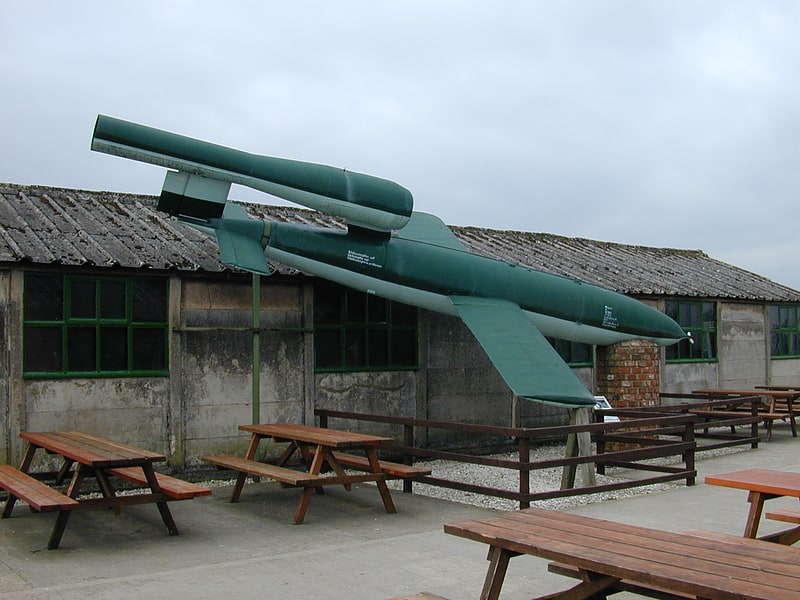
Museum in England. Eden Camp Modern History Theme Museum is a large Second World War-related museum near Malton in North Yorkshire in England.
It occupies a former Second World War prisoner-of-war camp of 33 huts. After the prisoners left, the camp was used for storage and then abandoned. Its grounds then became overgrown. As the museum was being set up, much clearing, as well as repair and renovation of the buildings, was required.
One of its buildings contains three human torpedoes and a "Sleeping Beauty" Motorised Submersible Canoe.The museum is also restoring a Super Sherman (M50) to its original working classic.
The museum also has a reproduction V1.[1]
Address: Eden Camp, Y O17 Malton
Scampston Hall

Park in Scampston, England. Scampston Hall is a Grade II* listed country house in North Yorkshire, England, with a serpentine park designed by Charles Bridgeman and Capability Brown. It is located on the north side of the A64 Leeds/Scarborough road, 4 miles east of Malton, in Scampston village. The name of the village was referred to in various ways in ancient documents as: Scamestun, Skameston, Skameston, and Skampston, and was probably derived from a personal name.
The hall features in two storeys of stuccoed orange-red brick with a slate roof and stuccoed brick chimney stacks. The frontage has seven bays, the central three of which are bowed.[2]
Address: Scampston Hall, YO17 8NG Malton
Wharram Percy
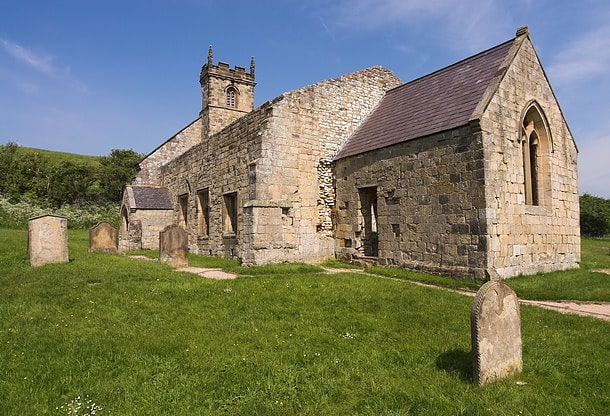
Village in England. Wharram Percy is a deserted medieval village and former civil parish near Malton, North Yorkshire, on the western edge of the chalk Wolds of North Yorkshire, England. It is about 1 mile south of Wharram-le-Street and is signposted from the Beverley to Malton road. Wharram Percy was part of the East Riding of Yorkshire until the 1974 boundary changes. In 1931 the parish had a population of 40.
The earthworks of the village have been known for many years, and outlines of house platforms were drawn onto the first Ordnance Survey six-inch maps of Yorkshire published in 1854. The site was researched each summer by combined teams of archaeologists, historians and even botanists, from about 1950 to 1990 after it was singled out for study in 1948 by Professor Maurice Beresford of the University of Leeds.[3]
Derventio Brigantum
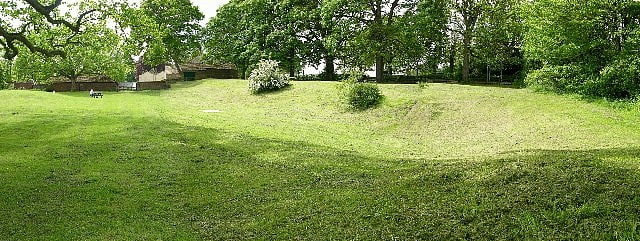
Derventio, sometimes described as Derventio Brigantium in order to distinguish it from other places called Derventio, was a Roman fort and settlement located beneath the modern town of Malton in North Yorkshire, England. The fort is positioned 18 miles north-east of Eboracum on the River Derwent.[4]
Ss Leonard & Mary

Ss Leonard & Mary Roman Catholic Church is a medieval church situated in Malton, North Yorkshire, England, now serving a parish in the Roman Catholic Diocese of Middlesbrough. It is a Grade II* listed building in the National Heritage List for England, and retains at least 24 pieces of medieval figurative carving.
A notice outside of the church reads: "St Leonard's with St Mary's. Founded in the 12th century as a Chapel of Ease to the Gilbertine Priory at Old Malton. This Church was transferred by way of gift as an ecumenical gesture of goodwill from the Church of England to the Roman Catholic Church in 1971."
Dating as it does from the mid- to late-1100s, this church is the oldest currently held by Catholics in England, a distinction formerly belonging to St Etheldreda's, London, which was built some time between 1250 and 1290. St Leonard's is the first English parish church to be returned to Roman Catholic use following the Reformation.[5]
Address: Church Hill, YO17 7EJ Malton
Malton Museum
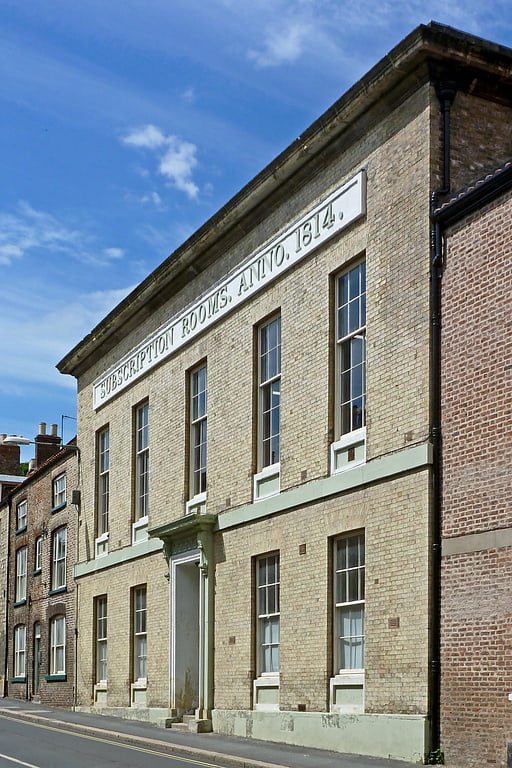
Malton Museum is an archaeological museum based in Malton, North Yorkshire.[6]
The Milton Rooms
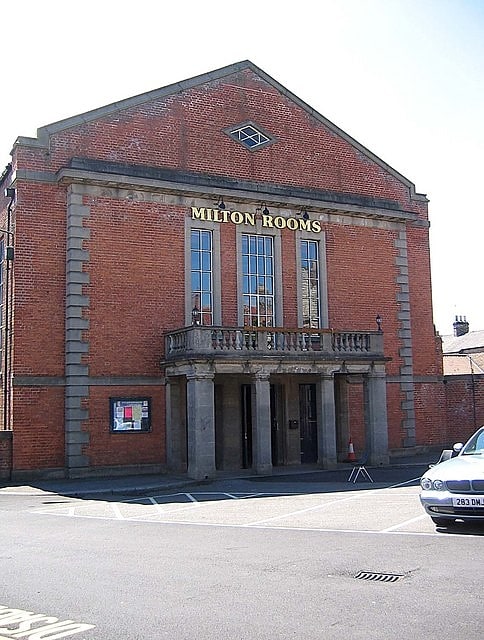
Community center in Malton, England. The Milton Rooms is an arts centre and hub for cultural and community led activities located in Malton, North Yorkshire, a market town in England.
The main body of the building was built in 1930 by the Fitzwilliam family over the 19th century Masonic Lodge which is still in use. This section of the building includes a theatre with the largest sprung dance floor in North Yorkshire and the Fitzwilliam Room; a bar renovated in 2011 as a studio theatre.
At the back of the Milton Rooms are the Grade II listed Assembly Rooms. They were formerly the Literary Institute and Subscription Rooms Built in 1814 also by the Fitzwilliam family.
The Milton Rooms was given its name by the Fitzwilliam family and originates from their family home Milton Hall.
The Milton Rooms is now a Charitable Trust, run by a board of trustees and operated by volunteers under the remit of Ryedale District Council.[7]
Address: Market Place, YO17 7LX Malton
Kirkham Priory

Priory. The ruins of Kirkham Priory are situated on the banks of the River Derwent, at Kirkham, North Yorkshire, England. The Augustinian priory was founded in the 1120s by Walter l'Espec, lord of nearby Helmsley, who also built Rievaulx Abbey. The priory was surrendered in 8 December 1539 during the Dissolution of the Monasteries. Legend has it that Kirkham was founded in remembrance of l'Espec's only son who had died nearby as a consequence of his horse being startled by a boar. The area was later used to test the D-Day landing vehicles, and was visited by Winston Churchill. The ruins are now Grade I listed and in the care of English Heritage.[8]